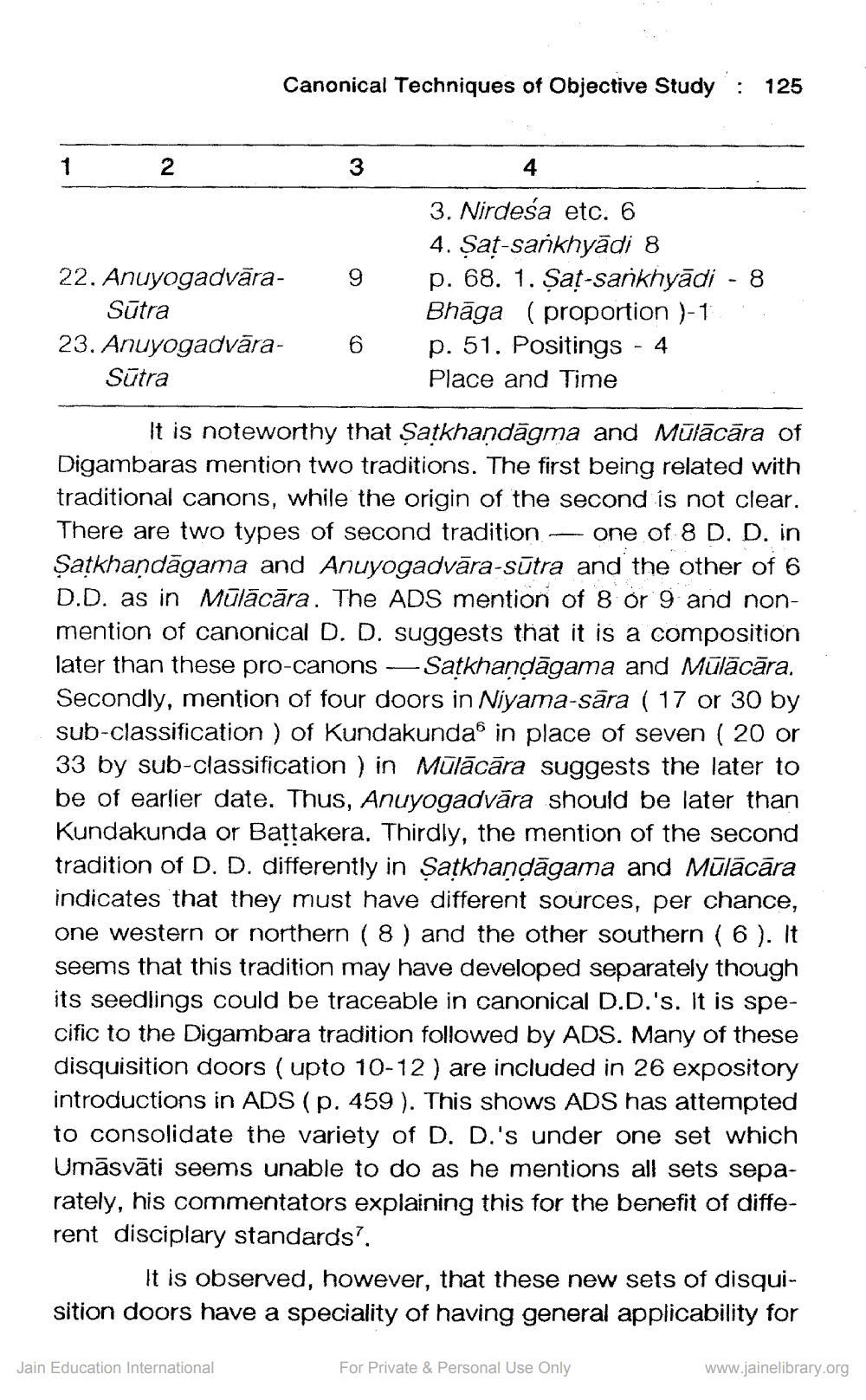________________
1
2
Canonical Techniques of Objective Study: 125
3
22. Anuyogadvāra- 9
Sutra
Jain Education International
4
3. Nirdeśa etc. 6
4. Sat-sankhyādi 8
p. 68. 1. Sat-sankhyādi - 8 Bhāga (proportion )-1 4
p. 51. Positings Place and Time
23. Anuyogadvāra- 6 Sutra
It is noteworthy that Satkhaṇdāgma and Mūlācāra of Digambaras mention two traditions. The first being related with traditional canons, while the origin of the second is not clear. There are two types of second tradition one of 8 D. D. in Satkhaṇdāgama and Anuyogadvāra-sūtra and the other of 6 D.D. as in Mūlācāra. The ADS mention of 8 or 9 and nonmention of canonical D. D. suggests that it is a composition later than these pro-canons -Satkhaṇḍāgama and Mulācāra. Secondly, mention of four doors in Niyama-sara ( 17 or 30 by sub-classification) of Kundakunda in place of seven ( 20 or 33 by sub-classification) in Mūlācāra suggests the later to be of earlier date. Thus, Anuyogadvāra should be later than Kundakunda or Baṭṭakera. Thirdly, the mention of the second tradition of D. D. differently in Satkhaṇḍāgama and Mūlācāra indicates that they must have different sources, per chance, one western or northern ( 8 ) and the other southern ( 6 ). It seems that this tradition may have developed separately though its seedlings could be traceable in canonical D.D.'s. It is specific to the Digambara tradition followed by ADS. Many of these disquisition doors (upto 10-12) are included in 26 expository introductions in ADS (p. 459 ). This shows ADS has attempted to consolidate the variety of D. D.'s under one set which Umāsvāti seems unable to do as he mentions all sets separately, his commentators explaining this for the benefit of different disciplary standards'.
It is observed, however, that these new sets of disquisition doors have a speciality of having general applicability for
For Private & Personal Use Only
www.jainelibrary.org




